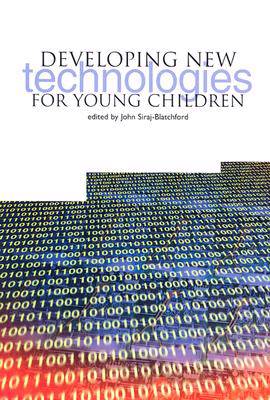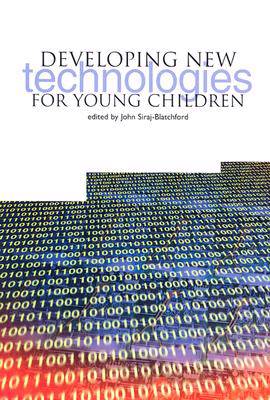
- Afhalen na 1 uur in een winkel met voorraad
- Gratis thuislevering in België vanaf € 30
- Ruim aanbod met 7 miljoen producten
- Afhalen na 1 uur in een winkel met voorraad
- Gratis thuislevering in België vanaf € 30
- Ruim aanbod met 7 miljoen producten
Zoeken
Developing New Technologies for Young Children
Paperback | Engels
€ 27,95
+ 55 punten
Omschrijving
This book describes recent work on developing new educational tools for four to eight year olds, funded by the European Commission. Children of this age learn quickly, as they have few pre-conceptions and are curious and open to new ideas and experiences. But young children have their own forms of communication and expression and the developers and designers of these learning technologies have had to create more intuitive and accessible products than if they were for older children and adults. The research and development indicates what can be done and the book points the way forward.
The work, carried out over three years in the European Commission Intelligent Information Interfaces (i3) program and its Experimental School Environments (ESE) initiative, was multi-disciplinary and involved ten collaborative research and development projects along with two supporting 'working groups'.
The contributors include Joseph Blat, Bridget Cooper, Richard Noss, Danae Stanton, Augusto Chioccariello, Phil Ellis and Lieselotte van Leeuwen. They describe the projects and the lessons learnt in the processes of developing each distinctive product and consider the cognitive and affective development of young children pertinent to the development of appropriate technology. Aspects of communication and collaboration, creativity and problem solving, metacognition, and of provision for special educational needs are explored in relation to the processes of developing each distinctive product.
The book will interest specialists and more general readers concerned with young children and technology. It provides a unique and valuable resource for all involved in researching the use of existing early childhood technology or embarking upon the development of new products.
The work, carried out over three years in the European Commission Intelligent Information Interfaces (i3) program and its Experimental School Environments (ESE) initiative, was multi-disciplinary and involved ten collaborative research and development projects along with two supporting 'working groups'.
The contributors include Joseph Blat, Bridget Cooper, Richard Noss, Danae Stanton, Augusto Chioccariello, Phil Ellis and Lieselotte van Leeuwen. They describe the projects and the lessons learnt in the processes of developing each distinctive product and consider the cognitive and affective development of young children pertinent to the development of appropriate technology. Aspects of communication and collaboration, creativity and problem solving, metacognition, and of provision for special educational needs are explored in relation to the processes of developing each distinctive product.
The book will interest specialists and more general readers concerned with young children and technology. It provides a unique and valuable resource for all involved in researching the use of existing early childhood technology or embarking upon the development of new products.
Specificaties
Betrokkenen
- Uitgeverij:
Inhoud
- Aantal bladzijden:
- 175
- Taal:
- Engels
Eigenschappen
- Productcode (EAN):
- 9781858563077
- Verschijningsdatum:
- 1/06/2004
- Uitvoering:
- Paperback
- Formaat:
- Trade paperback (VS)
- Afmetingen:
- 167 mm x 249 mm
- Gewicht:
- 385 g

Alleen bij Standaard Boekhandel
+ 55 punten op je klantenkaart van Standaard Boekhandel
Beoordelingen
We publiceren alleen reviews die voldoen aan de voorwaarden voor reviews. Bekijk onze voorwaarden voor reviews.










